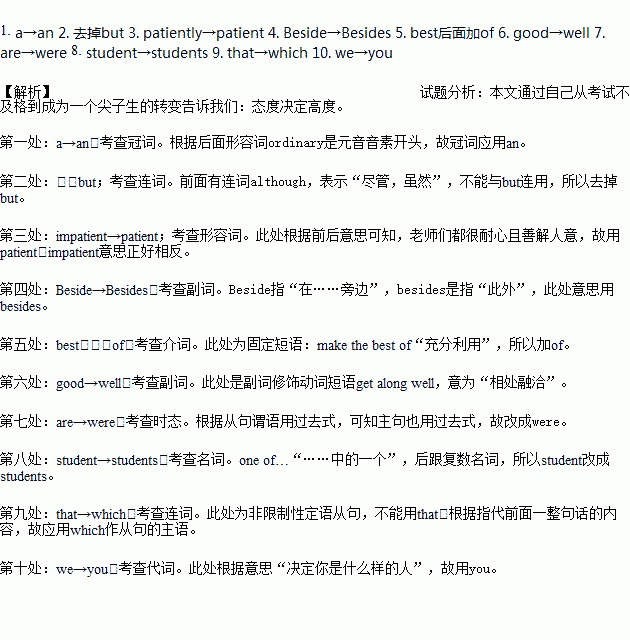��Ŀ����
�ٶ�Ӣ�������ʦҪ��ͬ��֮�佻��������,��������ͬ��д������.���й���10������,ÿ��������������������漰һ�����ʵ����ӣ�ɾ������.
���ӣ���ȱ�ʴ���һ��©�ַ��ţ��ģ�������������д���üӵĴʡ�
ɾ�����Ѷ���Ĵ���б�ߣ�\��������
�ģ��ڴ��Ĵ��»�һ���ߣ����ڸô�����д���ĺ�Ĵʡ�
ע�⣺1��ÿ���������ľ�����һ�ʣ�
2.ֻ������10�������ߣ��ӵ�11���𣩲��Ʒ֡�
Three years ago, I became a student in an ordinary school. Disappointing as I felt at the shabby campus and the poorly-equipped classroom, I find the teachers patient and considerate. Besides, I enjoyed the friend atmosphere in class. I decided to make the best for it. I worked hardly and got along well with teachers and classmates. Whenever I had difficulties, they were always available. Soon, I became one of the top student in my class, what greatly increased my confidence and I got more motivated.
My experiencee tells me that it is not what you are given but that how you use it that determine who you are.


 s to establish their social dominance (ͳ������over those in their grasp.
s to establish their social dominance (ͳ������over those in their grasp.